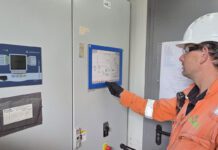Envirotec asks QUBE Renewables about the challenges of deploying small-scale, local biogas energy generating systems, with particular emphasis on a recent project to convert rice straw to biogas in the Philippines

Recent years have seen a number of start-up firms seemingly chasing the grail of small-scale AD, which promises to widen access to the technology, whether it be for deployment in the developing world or in back-garden digesters for eco-conscious households. In remote, rural and impoverished regions of the world, the technique has potent problem-solving potential.
But excitement at the technique’s promise has had to be tempered somewhat by the engineering challenges of making these systems actually work. QUBE Renewables’ Mark Clayton suggests his own firm has succeeded in providing reliable performance while also engineering out enough of the cost to allow small-scale AD systems to be deployed in some of the locations where they are most needed – remote and rural places in Asia and Africa. Such regions may be hard to access by road, and also lacking a ready-made infrastructure for recycling organic waste.
One aspect of the challenge is the intensive usage to which AD systems are subjected. Clayton says they’re not quite expected to run 24/7 but 19 hours per day of operation is normally what they allow for.
The firm’s technology was developed in conjunction with the MoD, following a request from the latter in 2011, for a solution suitable for the Army’s forward operating bases in Afghanistan, taking account of the high cost of fuel in relation to airlifting supplies and equipment to such locations.
Presenting itself as ‘the Ikea of renewable energy’, the firm provides flat-pack renewable energy plants able to convert biodegradeable waste into energy, to help provide heat, power and sanitation.
A better destination for rice straw

An important pilot project in recent years has been the ‘rice straw to biogas’ (R2B) project, conducted in the Philippines in conjunction with the universities of Southampton and Manchester, and the firm Straw Innovations. The project tackles the vexed question of what to do with rice straw – a traditionally wasted resource that arises from the farming of rice, the world’s number one food crop. Rice straw is frequently burnt or simply left to rot. It is associated with massive GHG emissions, and when burned it causes a great deal of particulate pollution.
AD has huge potential to solve a problem here, while helping reduce fuel poverty, improving public health, and assisting with fulfilling UN Sustainable Development Goals.
The project has set out to explore the viability of using AD to reduce the problem of rice straw burning. Questions asked at the outset included: Could we increase the value of rice straw through processing? And: Could we make this a viable business?
Fabric-based digester

The project has deployed QUBE’s dryQUBE, a low cost, ‘dry’ AD technology that can be set up anywhere, at relatively low cost, and with the scope for extensive customisation.
Each DryQUBE has a volume of around 500m3. The unit is seemingly ideal for ligneous wastes (such as green waste and sawdust) in need of long retention times (in excess of 180 days).
DryQUBE also uses a containerised and cost-efficient PSA upgrader to process the biogas into biomethane – the fact of being able to convert biogas into biomethane at this small a scale has itself been a significant engineering triumph.
With the R2B project, the straw was gathered in a central location, with around 640 tonnes being processed per batch – with each batch incurring a saving of around 2,000 tonnes of CO2 emissions and producing biogas fuel equivalent to 1.2 million kWh.
The dryQUBE digesters were able to be assembled in less than two weeks. A highly modular design is seemingly key to the flexibility offered by the system, with a variety of sub-systems available via ‘bolt-on’ modules, including those for the feed system, gas mixing, and the AD digester itself. Clayton says they have been careful not to put up performance data, suggesting that performance data made available in the small-scale AD sector has not tended to be terribly reliable or accurate.
Remote control
The firm operates with a build-own-operate model. A priority was to ensure that the digesters can be operated without too much technical expertise. The people who run these systems might be very bright and very keen, said Clayton, but may not have had much experience with process control or SCADA equipment, so the firm sees part of its brief in “making it easy for them”, he said. And with the rice to straw project, the farmer who is operating the site is able to run the digester effectively from his phone.






